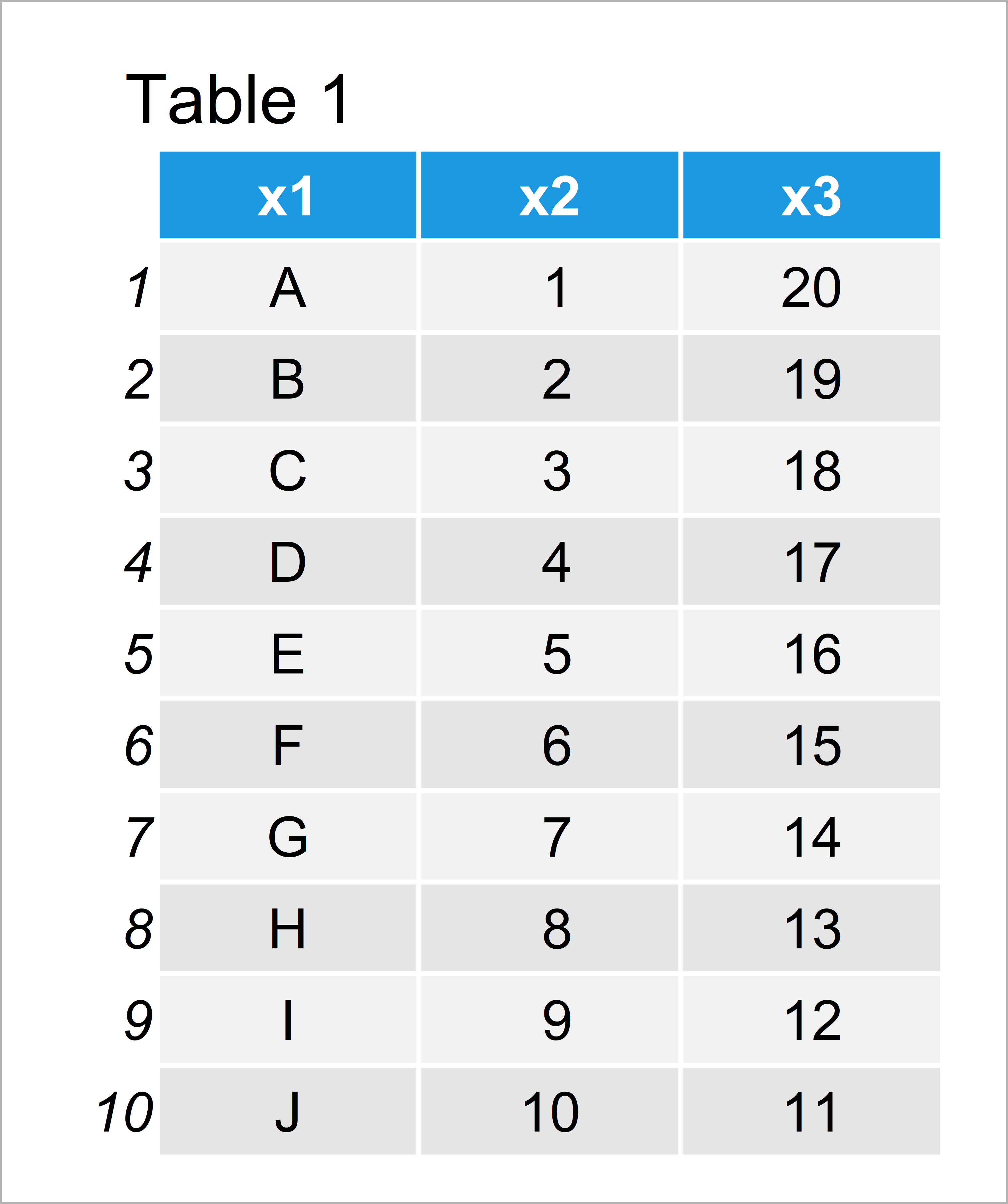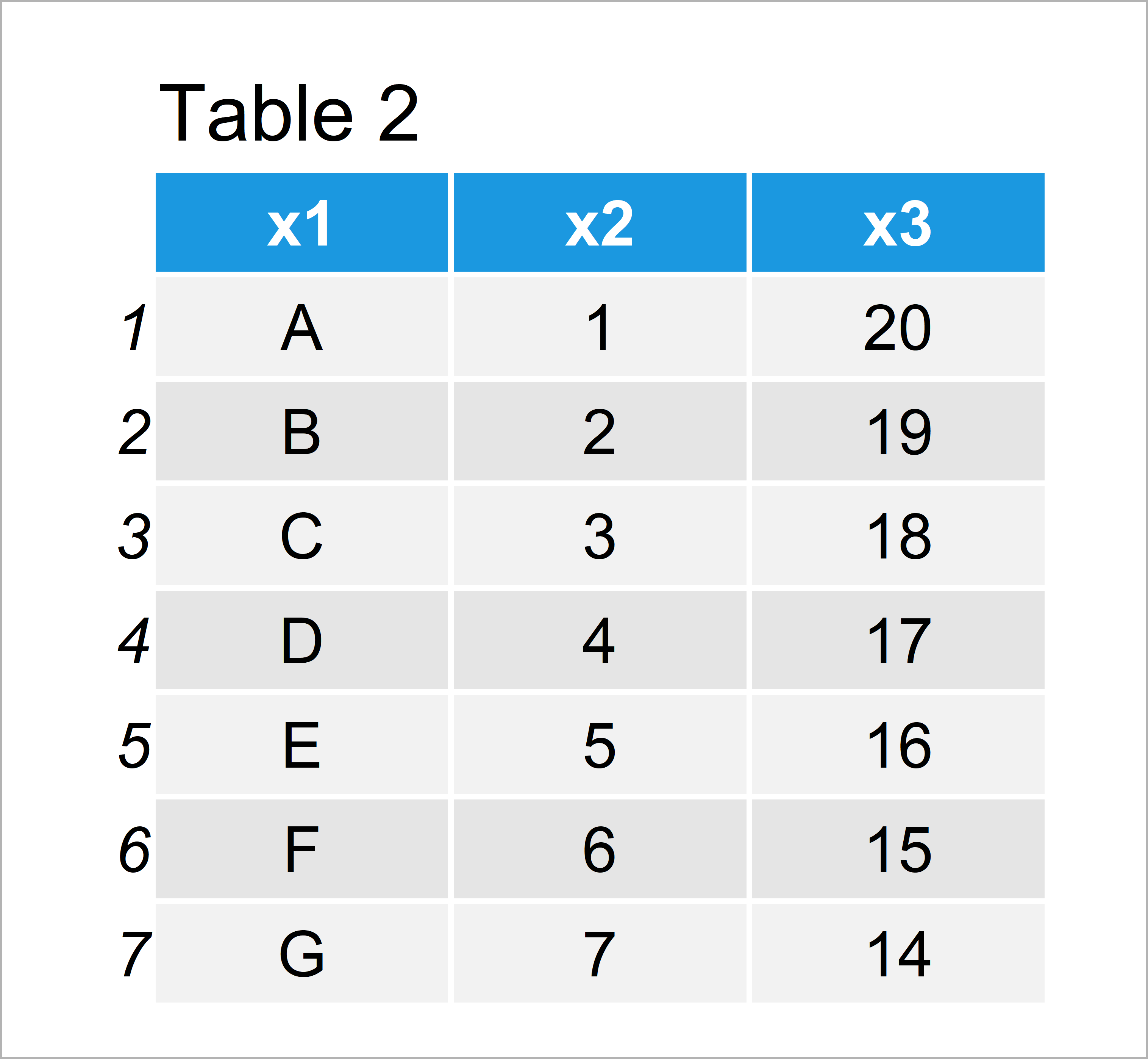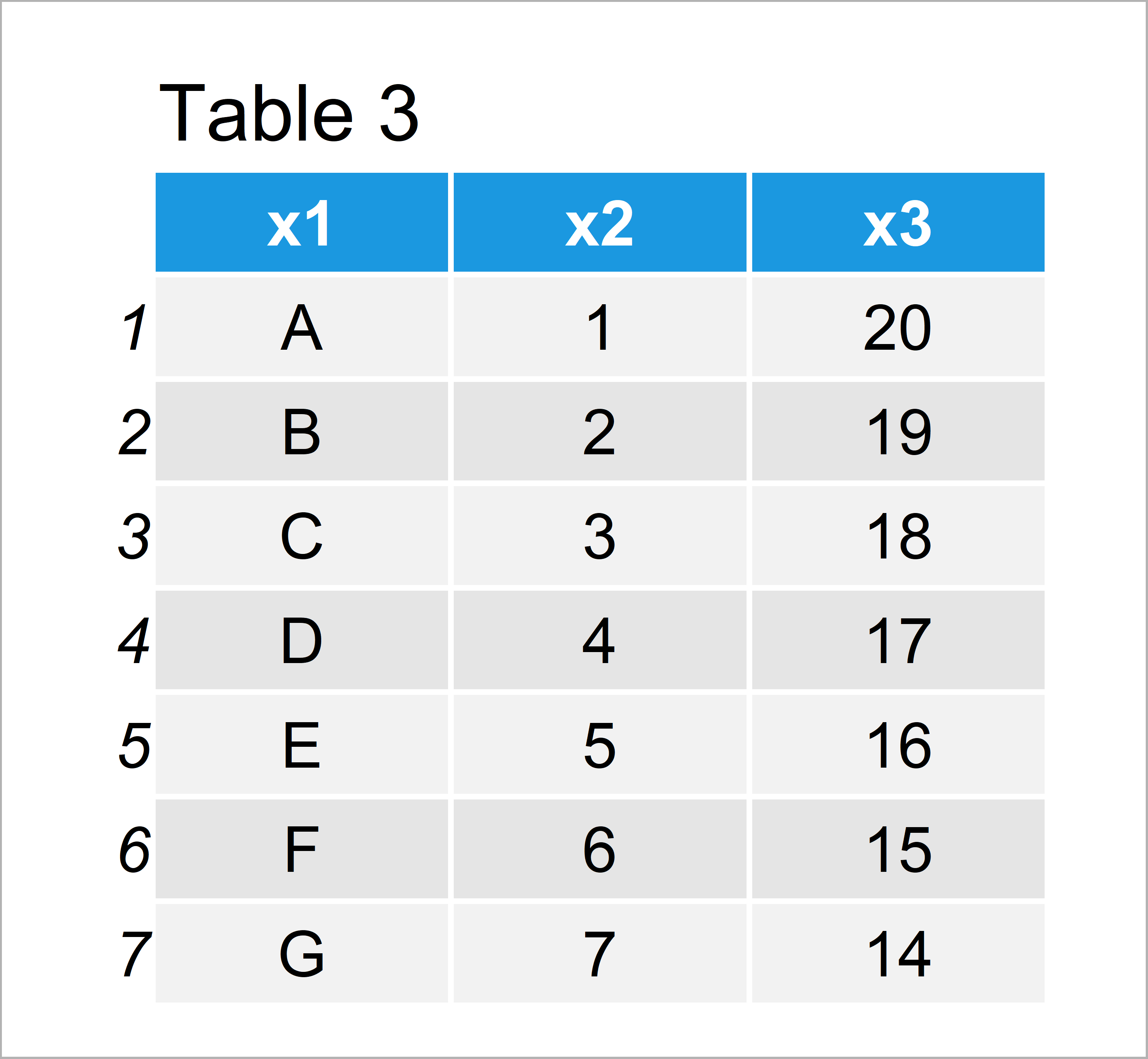Remove Bottom N Rows from Data Frame in R (2 Examples)
In this tutorial, I’ll explain how to drop the last N rows of a data frame in the R programming language.
Table of contents:
Let’s dig in.
Creation of Exemplifying Data
First and foremost, let’s create some example data:
data <- data.frame(x1 = LETTERS[1:10], # Create example data frame x2 = 1:10, x3 = 20:11) data # Print example data frame

As you can see based on Table 1, our exemplifying data is a data frame containing ten rows and three columns.
Example 1: Delete Bottom N Rows of Data Frame Using head() Function
In this section, I’ll illustrate how to use the head function to remove the bottom 3 rows of our data frame.
Within the head function, we simply have to specify the number of rows that we want to delete with a minus sign in front.
Consider the R cod below:
data_new1 <- head(data, - 3) # Apply head function data_new1 # Print data without bottom rows

After running the previous R programming code the data frame shown in Table 2 has been created. As you can see, our output data frame has only seven rows, i.e. three rows have been removed.
Example 2: Delete Bottom N Rows of Data Frame Using slice() & n() Functions of dplyr Package
Example 2 explains how to remove the last N rows of a data frame using the dplyr package.
To be able to use the functions of the dplyr package, we first need to install and load dplyr:
install.packages("dplyr") # Install dplyr package library("dplyr") # Load dplyr package
Now, we can apply the slice and n function to delete the last N rows of our data frame.
Similar to the previous example, we have to specify the number of rows that we want to delete with a minus sign in front:
data_new2 <- slice(data, 1:(n() - 3)) # Apply slice & n functions data_new2 # Print data without bottom rows

By running the previous R programming syntax we have created Table 3, i.e. a data frame without the last three lines.
Video, Further Resources & Summary
Do you want to know more about data manipulation and data frames in R? Then I can recommend watching the following video of my YouTube channel. In the video, I show the contents of this article in R:
In addition, you might read some of the other tutorials of my homepage.
- Repeat Rows of Data Frame N Times
- Extract First N Rows of Data Frame
- Remove Rows with NA in R
- Create Data Frame with n Rows & m Columns
- Conditionally Remove Row from Data Frame in R
- Remove Empty Rows of Data Frame
- All R Programming Examples
This tutorial has shown how to get rid of the bottom N rows of a data frame in R. If you have any additional questions, let me know in the comments.






